I am doing a heat transfer simulation into a cube and plotting the evolution through time with a 2D heatmap at mid-depth of the cube.
The issue is that the edges, while they represent the same value because it is a boundary condition, are not the same thickness on the heatmap during the simulation.
We can see that easier with the top and bottom boundaries, which are at 373 K, in red. Here is a screenshot of the .gif heatmap launched with "Image Viewer":
I join the dataset used to plot the heatmap:
x z t T
0.000 0.000 0.000 373.000
0.000 0.005 0.000 298.000
0.000 0.015 0.000 298.000
...
0.000 0.985 0.000 298.000
0.000 0.995 0.000 298.000
0.000 1.000 0.000 373.000
...
0.015 0.000 0.001 373.000
0.015 0.005 0.001 292.000
0.015 0.015 0.001 283.000
0.015 0.025 0.001 283.000
....
0.015 0.985 0.001 283.000
0.015 0.995 0.001 292.000
0.015 1.000 0.001 373.000
...
And here is the .plt code for Gnuplot:
set view map scale 1
set size square
set xlabel("x (m)")
set ylabel("z (m)")
set zlabel("T")
set xrange [-0.01:1.01]
set yrange [-0.01:1.01]
set title "Heat transfert 3D at mid depth of a cube"
set cblabel "T (K)"
set hidden3d
set palette rgb 33,13,10
set cbrange [283:373] # colobar range
set pm3d implicit at s
set pm3d corners2color max
set term gif animate delay 100
set output "para_heat_3D_insta_4_0.gif"
stats "plot_para_heat_3D_insta.dat"
do for [i=1:int(STATS_blocks)]{
splot "plot_para_heat_3D_insta.dat" index (i-1) using 1:2:4 with pm3d notitle
}
set output
Is someone has an idea and could help me? Thanks in advance.



